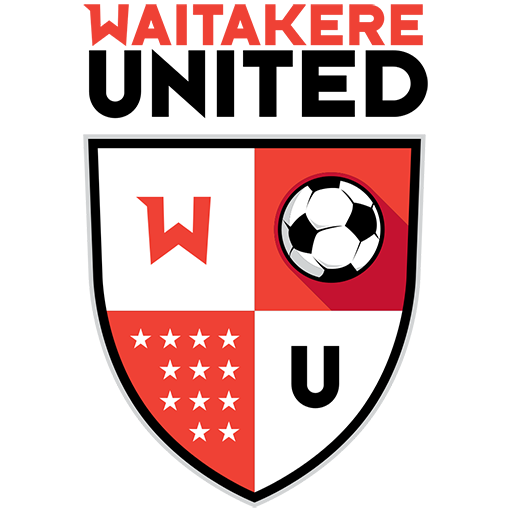Understanding BBC Transfers: A Look Into Recent Changes and Trends
“`html
BBC Transfers: Behind the Headlines of Player Movements
The world of football is not just about the matches played on the field but also about the strategic movements and decisions made off of it. This blog post dives into the intricacies of transfer activities reported by the BBC, highlighting significant developments across various dates. Ranging from early September to November, we’ll explore the high-stakes environment where players are bought, sold, and loaned, revealing the impact these moves have on both teams and fans. Our journey through these transfer reports is structured chronologically, enabling a clear view of the evolving narratives and the dynamics of the football season.
1 September
The month of September kicked off with a flurry of activity as clubs rushed to finalize deals before the transfer window closed. High-profile moves were at the forefront, with clubs looking to strengthen their squads for the upcoming season. Managerial strategies and tactical needs dictated many of these decisions, with teams looking to fill critical gaps and enhance their competitive edge.
On this day, one of the standout transfers involved a major Premier League team securing the services of a youthful prodigy from a competing league. This move not only showcased the club’s commitment to building for the future but also highlighted their eye for talent, ensuring that they remain competitive for years to come.
2 September
The day after the transfer window closed, analysis of the previous month’s activities dominated the headlines. This time marked a period of reflection, as clubs assessed their dealings and how new arrivals could integrate into existing squads. Experts and pundits began examining the potential impact of these transfers, debating which clubs had bolstered their chances for success.
One intriguing theme was the increased focus on youth development. Many clubs had either promoted talents from their academies or signed promising youngsters from elsewhere, signaling a shift towards nurturing homegrown talent in hopes of reaping long-term rewards.
3 September
This day saw a focus on the aftermath of last-minute transfers. Teams and players had little time to settle, with matchday preparations already underway. The challenge for managers was integrating new signings quickly, ensuring they adapted to tactics and team dynamics while building rapport with their new teammates.
Furthermore, the impact of these new recruits on existing squad members became a talking point. With increased competition for places, questions arose about how established players would respond, both mentally and in terms of performance, to the heightened competition.
4 September
As the first competitive games with new squads approached, fans eagerly anticipated seeing how their teams would line up. The anticipation was palpable as supporters hoped their club’s transfer dealings would translate into improved results on the pitch.
This period also served as a check-in on players who had been the subject of intense transfer speculation but ultimately stayed put. The focus shifted to their performances and contributions, with fans keen to see a commitment to the cause despite not moving clubs.
5 September
Focus shifted to the international stage, where many players reported for duty with their national teams. The transfers’ impact was discussed in light of international performances, providing an early indication of players’ adaptability and form post-transfer.
Several players, fresh from securing moves to new clubs, put in standout performances for their countries, showcasing their quality and vindicating their transfer decisions. These performances added another layer of excitement and expectation for upcoming club appearances.
6 September
By this time, clubs not only reflected on their activities but also started planning for the next transfer window. Strategic meetings and assessments were in full swing as clubs evaluated their current campaigns and began identifying additional opportunities for squad improvement.
Attention also turned towards managing player contracts, with teams aiming to secure long-term deals for key players or, conversely, deciding to release those who no longer fit the club’s future plans. This internal focus was key to maintaining stability and avoiding potential transfer sagas in the future.
7 September
The footballing community also began considering the financial impacts of the summer transfer window. Analysts examined whether clubs had made prudent investments or perhaps overspent in pursuit of short-term success. This financial scrutiny often provided fans and stakeholders with insight into club management strategies.
Meanwhile, the shift towards sustainable spending and development through youth academies became a popular subject, with clubs looking to balance their financial constraints with the desire to maintain a competitive squad.
9 September
With the club season in full swing, attention reverted to on-field performances and how new recruits were blending into their squad frameworks. Tactical adjustments and player slots began to solidify, reflecting the manager’s vision shaped by new additions.
The narrative surrounding player satisfaction and their immediate impact on team dynamics provided another layer of intrigue. In this context, it was observed that clubs with a clear sense of direction and players integrated seamlessly had begun to see early results.
10 September
Mid-September saw a continued focus on the evolving dynamics within the squads. Players who had previously been on the fringes were now taking center stage, propelled by a combination of transfers and managerial tactics.
Amidst rising competition for starting spots, emerging stories of previously underutilized players thriving became compelling. This highlighted the multifaceted nature of transfers and their ability to reignite careers or boost squad morale.
12 September
European competitions kicked off with newly transferred players jumping onto the continental stage. The prospects and performances in these games were closely monitored, providing a contrasting arena to domestic leagues.
Seeing new signings perform in these high-stakes environments gave further insights into their capabilities and potential impact on the club’s European ambitions, setting the tone for how they might fare in the season’s longer haul.
13 September
The day also brought a focus on managerial reflections regarding the recent transfers. Press conferences and media engagements by club managers provided direct insights into their satisfaction with the window’s outcomes.
Questions about new arrivals, integration pace, and long-term plans with the new roster took precedence, creating a media dialogue that highlighted both on-field strategies and off-field narratives.
17 September
Performance discrepancies across leagues and countries became a discussion point, with speculation regarding the long-term effectiveness of numerous transfers taking hold. Debates ensued over whether clubs had made the right roster enhancements during the window.
This reflective time allowed analysts to pair initial performances with economic evaluations of player value, providing an early but incomplete report card on the effectiveness of the window strategies.
18 September
Player morale and adaptation were monitored, assessing the happiness and comfort of new signings within their teams and cities. This dynamic can heavily influence a player’s long-term success and commitment to the club.
Integration into team culture and lifestyle adaptations offer a valuable learning perspective, as not all transfers are judged solely on on-pitch performance, but also on off-field adaptability.
19 September
Storylines began emerging around untapped potential and standout unexpected performances. Generally, unheralded signings began making names for themselves as integral parts of their teams’ success.
The spotlight on these unlikely heroes provided engaging narratives as fans embraced surprising additions who quickly became fan favorites, altering the perception of low-key transfer dealings.
20 September
The media focused on upcoming winter window opportunities, with early speculation and rumors about potential targets. Clubs with less successful windows started identifying areas requiring urgent reinforcement.
Strategic implications of summer moves were evaluated based on performance trends and injury lists, setting the stage for targeted adjustments rather than wholesale changes expected in the winter window.
24 September
As a new month approached, analysis centered on larger league and cup competition dynamics. Observations about title challengers began surfacing, partially informed by summer signings’ performances.
Reflections on the long-term implications of these transfers began to shape wider league trends, with innovative signing strategies starting to redefine competitive hierarchies.
26 September
The month closed with a mixture of on-field successes and behind-the-scenes planning for future transfers. The cycle of evaluation saw club hierarchies reassessing their positioning and potential future moves.
Conversations on legacy and investment in sustainable football operations took precedence, as clubs sought to align financial prudence with the pursuit of competitive success.
27 September
Focus shifted towards individual player development within clubs as nurturing young talents unveiled progressive project strategies. Longer-term gains from the transfer market began emerging as next-generation readiness became a focal point.
This burgeoning narrative concentrated on future stars paving paths towards personal and club success, illustrating the broader vision of clubs investing in promising youth.
30 September
Months of intense activity culminated in reflections on pivotal player contributions arising from the transfer market. Clubs evaluated the immediate dividends from strategic decisions in a fast-unfolding season.
Fans and media continued deliberating the initial outcomes, with enthusiasm building for what the relentless dynamics of the coming months might hold.
4 October
Amidst these discourses, clubs began assessing cumulative strategies involving both summer transfers and forthcoming talent acquisitions. This cohesive approach signaled an understanding of the versatility required to navigate a full football season.
Ongoing matches began shaping the decision-making landscape as individual performances informed broader tactical plans, influenced by both established and new talents.
6 October
The stage of planning expanded beyond established trends, accounting for evolving league competitiveness and player performance. As clubs set their sights on potential new targets, a higher level of strategic forecasting was employed.
Club investment in player development sparked ongoing dialogues within the footballing community, emphasizing the balance between immediate success pressures and nurturing future talent.
18 October
The closing segments of October revisited intensity and consistency in transfer market dynamics, acknowledging the broader implications of resource allocation made by clubs.
This reflection addressed helmsmanship and strategy execution as clubs synthesized recent transfer outcomes with emerging trends within the modern football landscape.
19 October
Highlighting innovative recruitment, clubs began making smart choices in player acquisitions, addressing strategic areas resulting in successful whole-team synergy. These considerations marked a holistic look at squad cohesion.
Implementation of these broad transfer market approaches reflected astute planning, with broader recognition of their ability to influence team evolution.
22 October
The month gathered momentum as detailed evaluations on player integration continued, with revelations transpiring in pivotal influences stemming from acquisitions made earlier in the year.
This inquiry into tactical realignment further showcased how adept planning and execution could foreseeably transform club fortunes over a football season.
23 October
In-depth media analyses persisted as the finer elements of transfers and their broader implications within the league framework became sharper. Early season performances were used to assess long-term plans set into motion.
Developing narratives focused on the player’s ongoing adaptation and proactive club measures to ensure their signings could make desirable impacts on team fortunes.
25 October
The gathering pace of momentum across the leagues saw clubs validating summer decision-making practices, with early manifestations of revised strategies fortifying club performance.
Acknowledging tactical foresight, clubs continued to adjust and refocus areas of concern, with intent to reinforce their stances come the next transfer window.
28 October
Conversations of legacy-building emerged alongside minor transfer stories aiming to ensure competitive durability. Clubs began orchestrating impactful long-term initiatives with an intention to secure foundational greatness.
This prevalent shift of thought, balancing legacy with immediate needs, began painting promising pictures of evolved competitive landscapes within professional football leagues.
1 November
Entering November, the football community delved deeper into the ‘bigger picture’ behind player movements and emergent team identities. The focus extended to strategies’ broader implications across league ecosystems.
Amidst this detailed exploration, evaluating whether or not key signings lived up to expectations began cementing perceptions within fan bases, dictating future market narratives.
8 November
Continued critical examination from clubs on their roster efficiencies showcased the results excavated from prior window activities. Efforts aimed at buffering talent pipelines commenced revelations across club portfolios.
This strategic approach became more than results-oriented, molding a sustainable outlook aligned with projected goals, underscoring the interplay between philosophy and tactical execution.
9 November
Clubs weighed their experiential insights drawn from the completed transfers, evolving methods into impactful analytical tools. Evaluations extending throughout the system portrayed forward-thinking attitudes enhancing reputation management.
Explorative engagements on future player market forays encapsulated a methodological advancement influencing ongoing achievements, forever challenging the conventional wisdom of bygone eras.
22 November
Through embracing analytics tempered into calculative creativity, clubs affirmed an era focused intently on refined articulation of routes to success within transfer markets.
This period witnessed documented deliberation on cultivating success, rooted within intrinsic evaluations, instigating collective trajectories that future-proof modern football enterprises.
Transfers page archive
The transfers page archive serves as a comprehensive resource for enthusiasts keen to explore every move tracked during this vibrant period. It includes details about player movements, associated fees, and insightful commentary on strategic club decisions.
This archive offers a wealth of knowledge, chronicling the narrative of an eventful transfer season and its reverberations within the fast-moving world of professional football.
Related topics
Related topics of interest emerge around the economics of transfers, scouting methodologies, and the evolving role of data in forming transfer strategies. These subjects contribute to understanding the broader context in which player movements are made.
These dimensions not only extend the narrative of transfers but also build a more rounded comprehension of their impact on football’s global ecosystem.
Below is a table summarizing the key themes discussed throughout the September to November transfer period:
| Date | Key Themes | Observations |
|---|---|---|
| 1-3 September | Transfer Window Closure | Analyses of last-minute deals and strategic alignments. |
| 5-7 September | Focus Shift | International duties impacting club transfer assessments. |
| 10-13 September | Integrated Performances | Evaluations on player adaptability and initial impacts. |
| 17-20 September | Performance Discrepancies | Emerging storylines on unexpectedly successful signings. |
| 24-30 September | League Competitiveness | Assessing transfer impacts on league dynamics. |
| 4-9 October | Strategic Assessments | Evaluating strategies post-transfer window activities. |
| 18-25 October | Continued Evaluation | Ongoing assessments of fiscal and tactical adjustments. |
| 28 October – 9 November | Legacy-building | Long-term strategic planning aligning with immediate successes. |
| 22 November | Refined Strategies | Clubs focusing on analytical tools to enhance success pathways. |
“`







